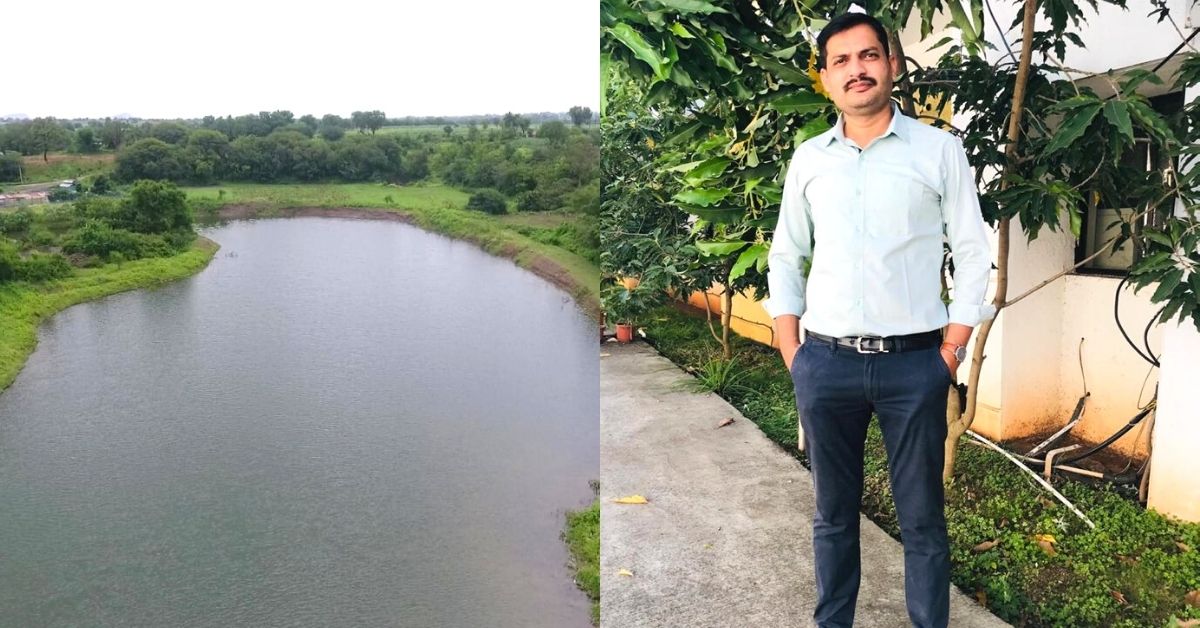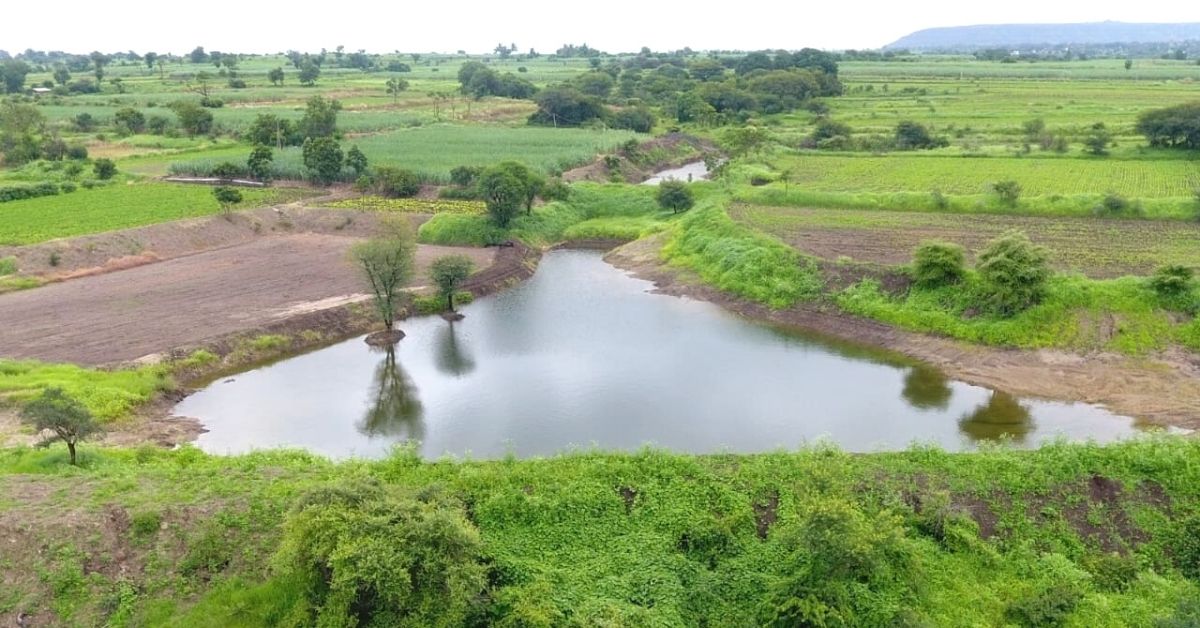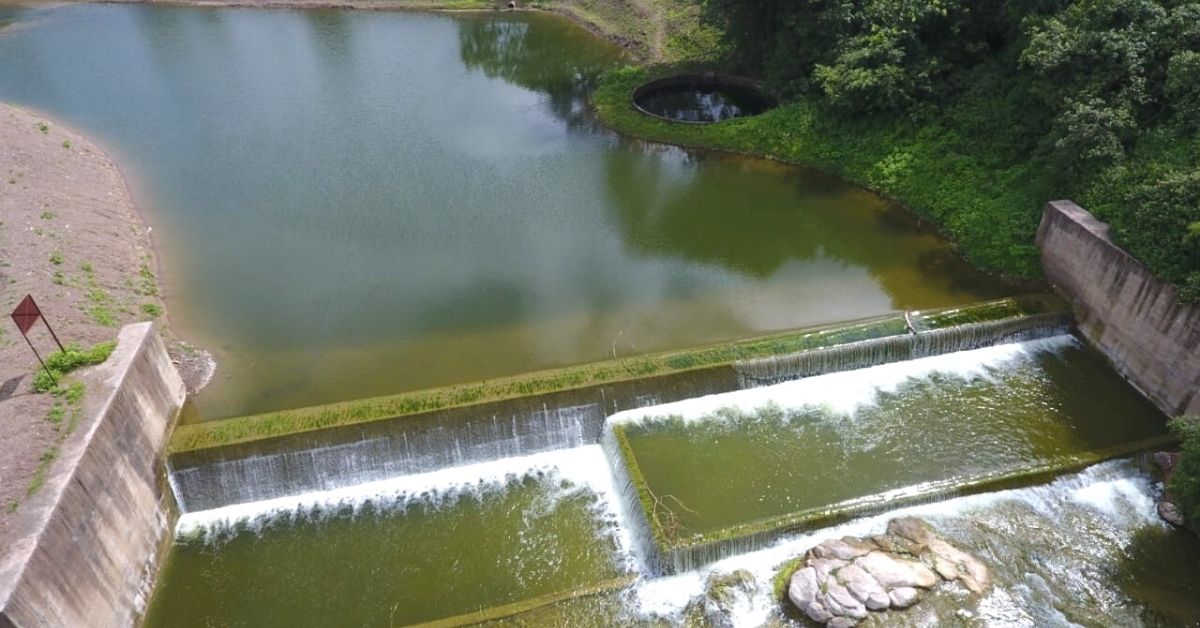Saving 29 Crore Litres Of Water in 2 Years, Pune Man Helps His Village Go Tanker-Free
Yogesh Chavan, an HR professional in Pune, took up water conservation efforts in his native Dahigaon village to recharge groundwater table and make village water tanker-free

In six years between 2008 and 2014, Dattatray Kharade dug eight borewells in his 2.5-acre farmland out of which seven dried up. But, for the past two years, all of the borewells have surplus water in them.
Dattatray, a 50-year-old farmer from Dahigaon village in Satara district of Maharashtra, says that he had “never witnessed plentiful groundwater in the village borewells his entire life”.
What changed in the past couple of years for the 3,500 residents of the village were the efforts taken to harvest and conserve rainwater and recharge groundwater.
Dahigaon, along with surrounding villages in a 100-km radius, has perennially suffered from water issues. Falling in the rain shadow region, the farmers in the villages could not experiment with a wide variety of crops and depended entirely on the mercy of the rain gods.
But a human resource professional and a native of the village, Yogesh Chavan decided to change it all.
“As an HR professional working in Pune, I always received applications from youngsters in the village seeking job opportunities. Unfortunately, with the increasing competition and limited positions in my company, I always felt helpless and disappointed for not being able to help them,” Yogesh says.
However, during his visit in 2016 to the village, he decided to do something for the village youngsters that could potentially create more opportunities in the village itself.
Harvesting water in a crematorium

That year, Yogesh, along with Dattatray and a couple of friends, took up a rainwater harvesting project in a crematorium. The idea to first create a shed on a roofless structure like a crematorium was to motivate villagers attending funerals to take up rainwater harvesting projects at home.
The first steps to build a rainwater harvesting project is to build a shed. The rainwater is then channelised, filtered through various natural filtration systems and stored in water tanks or is returned to borewells. Students from the National Service Scheme (NSS) visited the village and the shed was completed as a part of the project.
The following monsoon, they succeeded in increasing the water levels of a single well by harvesting the rainwater from the crematorium project. Motivated by their small success, the same experiment was repeated in four other houses in the village.
In 2017, Yogesh’s group, along with some villagers who realised the importance of water conservation, decided to scale up the drive. The villagers collected Rs 18 lakh through personal contributions and donations from local organisations.
“Some like-minded people wanting to volunteer, teamed up to repair leakages, replace broken doors and take up other pending work to prevent losses from a KT Weir (small water dam) on the river Vasana that flows through the village,” Yogesh says.
The HR professional says that an 800-meter stretch along the river was selected to carry out desiltation, widening the river bank and other water conservation measures to increase the water carrying capacity of the river.
How to save a million litres of water

Yogesh says that the following year he managed to seek Rs 25 lakh from different companies under their corporate social responsibility (CSR) projects. “Seeking CSR funds was difficult, as not many companies easily trust water conservation initiatives because the immediate results are not visible. Gaining the trust and confidence of the government officials was another hurdle to cross,” he adds.
“In the summer of 2019, we worked on the remaining 800-metre stretch of the river for water conservation. Besides this, 17 check dams on three canals connecting the river were taken up for either construction, repairs or increasing the water percolation capacity. The overall water arresting capacity in structures increased by 50%. The work involved water conservation from the point the river entered the village until it crossed its boundaries,” Yogesh adds.
Yogesh says that through CSR funds, experts, engineers and volunteers were roped in. “The experts took the responsibility for measurements and calculations required for the scientific approach. The engineers estimated to save 29 crore litres of water with the completed work on 75,553 square meters of land. The average depth of the check dams and structures were at 3.85 metres,” he adds.
Dattatray says that fortunately there was plenty of rain that year. “The rainwater filled the wells and recharged the groundwater sources. The water in the well that was available at 60-70 feet reached 30 feet. The old water levels of borewells found at 150 feet rose to 70 feet,” he adds.
Water — a precious asset

The efforts of the villagers were not only limited to benefit Dahigaon alone but also helped the groundwater levels to increase in neighbouring villages like Deur, Anpatwadi and Ghigewadi.
Yogesh says the immediate effect was that farmers could cultivate crops on more land, start irrigation and use the water pumps to extract groundwater that was dry for years.
“The water pump on my ancestral farm could not extract any water since 2013, but for the last two years, the water is available 24×7,” Yogesh tells The Better India.
“A youth group is now experimenting with organic farming for the first time this season. We are working to establish a producer and customer link in Pune. The availability of water will help stop the migration of youth and they could explore job opportunities in the village,” Yogesh says.
Sunanda Chavan, another villager, says that before her sugarcane never grew more than waist level but this year it has scaled way above her head. “Many people in the village thought that mere excavation of soil and building some bunds would not help. But they failed to realise that it was a scientific approach,” she adds.
Seeing as how the village is not dependent on water tankers anymore, Sunanda adds that she’s been urging people not to waste water. “I tell as many people as I can that just because the water is available now, they should not waste it. It is a precious asset, and we need to use it wisely,” she adds.
(Edited by Yoshita Rao)
If you found our stories insightful, informative, or even just enjoyable, we invite you to consider making a voluntary payment to support the work we do at The Better India. Your contribution helps us continue producing quality content that educates, inspires, and drives positive change.
Choose one of the payment options below for your contribution-
By paying for the stories you value, you directly contribute to sustaining our efforts focused on making a difference in the world. Together, let's ensure that impactful stories continue to be told and shared, enriching lives and communities alike.
Thank you for your support. Here are some frequently asked questions you might find helpful to know why you are contributing?


This story made me
-
97
-
121
-
89
-
167














